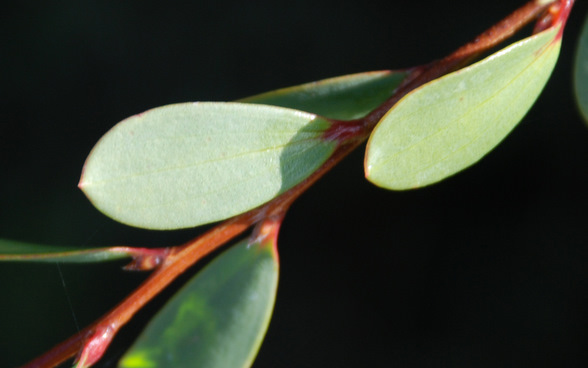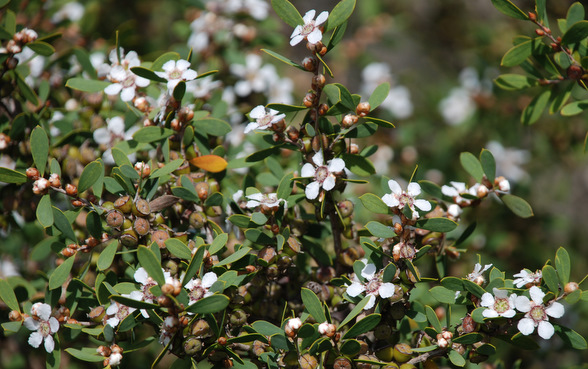Its genus name Leptospermum is from Greek leptos (thin) and sperma (seed), referring to its small seeds; and its species name laevigatum is from Latin laevigatus (smooth), probably referring to the appearance of the plant.
Also known as Australian Myrtle and Victorian Tea Tree.
A tall, bushy shrub or small tree, with bark that sheds in strips. Grows up to 6 m tall.
Leaves
Grey-green and obovate (egg-shaped and flat, with the narrow end attached to the stalk). They are 1.5 – 3 cm long and 5 – 8 mm wide.
Flowers
White and usually in groups of two. The flower heads are usually 1.5 – 2 cm in diameter, and made up of five petals that are 5 – 8 mm long, with many stamens protruding from the centre that are 2 mm long.
Fruits/Seeds
Fruit in the form of woody capsules which are flat-topped and 15 – 20 mm in diameter. They have fleshy outer surfaces and contain many seeds which are winged to facilitate wind dispersion.
Field Guide
Improve your identification skills. Download your Coastal Tea Tree field guide here!





